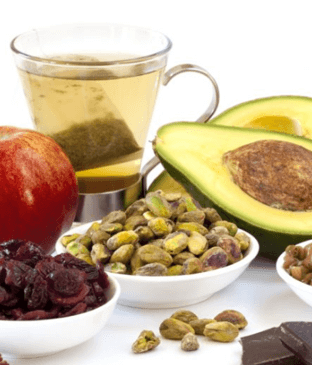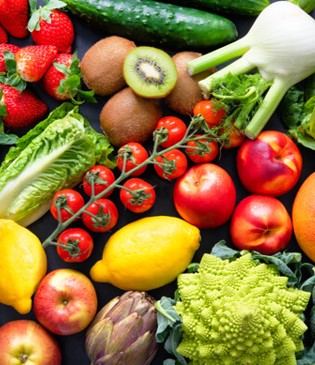Iron makes your blood go round—literally. And iron deficiency is more common than you think.
The recipe to make red blood cells requires ample portions of dietary iron. When iron is in short supply, blood production drops, and a cascade of new health challenges is set in motion.
Iron Deficiency is Common
Iron deficiency is the leading nutritional deficiency world-wide—affecting 1/8th of the world population. The most serious consequence or iron deficiency, a low blood count, or anemia, afflicts 5 million in the U.S. alone and several hundred million worldwide. About 10% of women in their childbearing years have iron-deficiency anemia, as do fully 25% of pregnant women.
Problems with Iron
Inadequate iron in the diet is a common cause of iron deficiency. Dietary iron exists in two major forms: one concentrated in meat and chicken (heme iron) and the second type from plant sources (non-heme iron).
Heme iron from animal sources is better absorbed than heme from plants but has a major downside: it is linked to a bevy of diseases from diabetes to cardiovascular disease to cancer. No such harmful association exists for non-heme iron from plant sources.
What About Iron from Plant Sources?
Non-heme iron is highly concentrated in beans, kale, spinach and fortified whole grains. The weak absorption of plant-sourced iron can be substantially boosted when eaten along with Vitamin C—including citrus fruits and juice. One more reason to include fruit for snacks and dessert!
Medications and Iron Deficiency
Certain medication can also lead to iron deficiency. The most notorious are the PPIs (Proton Pump Inhibitors) that cut stomach acid production and are used to treat ulcers and acid reflux.
Stomach acid exists for a reason, and its suppression with PPIs can have significant downsides. Stomach acid is needed for absorption of many nutrients—including iron. When PPIs are used long-term, the loss of stomach acid can lead to severe iron deficiency, as well as depletion of other key nutrients including magnesium and Vitamin B12. Severe anemia, as well as muscle and heart complications, can result.
Blood Loss and Body Iron
Bleeding can lead to iron deficiency because the iron contained in lost blood cells is no longer available for internal recycling. Women of childbearing age can have iron deficiency from heavy periods. For others, the source of blood loss is often not readily apparent, and the finding of iron deficiency anemia in a routine blood test is often the first clue of a slow internal bleed. The source of these “hidden’ bleeds may be stomach ulcers, as well as polyps and tumors in the colon. That is why people with unexplained iron-deficiency anemia often need tests that examine the upper and lower GI tract.
Symptoms of Low Iron
Like a car a few quarts down in oil, the body doesn’t run well with a low blood count. When anemic, even young, otherwise healthy people can become fatigued and develop shortness of breath with even mild exertion.
Eat Dirt?
A less common, but decidedly peculiar symptom of iron deficiency is called pica, a dietary craving for unexpected substances. The most common forms of pica include a proclivity to eat dirt and clay. A more palatable version involves an unusual appetite for ice. The reason for these strange cravings is unknown.
Iron and Heart Disease
Iron-deficiency anemia increases the risk of heart disease. Less oxygen is stored in the anemic blood, and therefore the heart is required to pump the diluted blood faster and harder to meet the body’s demands. Over time, the increased demand on the heart from iron-deficiency anemia can cause the heart muscle to stretch and eventually weaken.
The problem is even more dire for people who already have heart failure due to a weak heart muscle. The heart is already taxed in an attempt to pump enough oxygen to the vital organs. Add a low blood count to the mix, and the amount of oxygen delivered to the tissues drops further, sometimes to critically low levels. Shortness of breath with minimal exertion, and swelling due to water buildup are common, and sometimes incapacitating.
For people who have heart disease that includes blocked heart arteries, the oxygen-starved heart takes a further hit with anemia and increases the risk of more chest pain and the possibility of a heart attack.
How to Find Out If You’re Iron-Deficient
Iron deficiency is often first suspected during routine blood tests that reveal a low blood count. Additional tests to cinch the diagnosis of iron deficiency can include measurement of iron in the blood, as well as blood tests that reflect total body iron stores, ferritin and transferrin.
Ensure Iron-Clad Health
The best plan to get enough iron is, of course, through a varied diet loaded with as many plant sources of iron as possible including generous portions of beans, kale, and spinach. The addition of citrus fruits for snacks and desserts supplies added Vitamin C that helps to boost iron absorption.
For some, dietary intake of iron isn’t enough. Women of childbearing age, and even more so, pregnant women, are at higher risk of iron deficiency—make sure to check in with your doctor to see if an iron-containing multivitamin or iron supplement would be helpful.
And don’t forget to have regular physical exams and lab work. It is not unusual for serious health problems, like colon cancer, to be first suspected when routine blood work shows iron-deficiency anemia.
Make sure you’re pumping enough iron—dietary and otherwise!
Interested in eating better for your own health?
Learn the essentials of good nutrition in our interactive, user-friendly nutrition learning program for the public.
Clinicians: Do you feel confident responding to patient questions about nutrition?
Take our award-winning condensed interactive nutrition CME—and learn what every clinician should know about nutrition.



